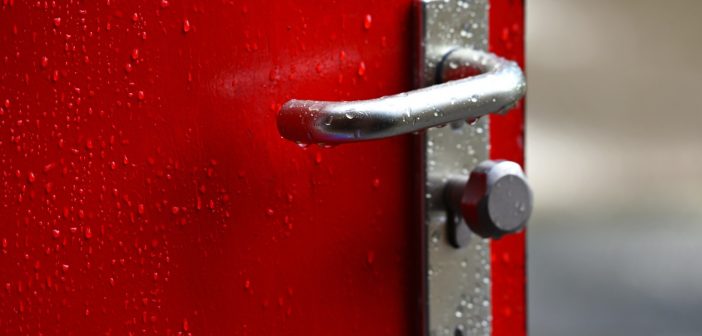Did you have to bust your door lock because you forgot your key inside? Do you worry about thieves breaking into your home because it’s been a while since you changed locks? Over 278,000 break-ins took place in 2016 alone, meaning the threat of burglary is always present.
Changing your locks is a smart idea but do you know how to change a lock in the first place?
If you’ve never done it before, you’re in luck. We’ve got a guide right here to walk you through the process. Take a moment to follow these steps to fix or replace your current locks:
- Buying the Right Lock
Before you disassemble anything, get measuring tape and check the dimensions of your current lock. You’ll want to get the exact measurements of the latch assembly, the length of the bolt, and the distance between the screws.
It’s a smarter move to buy a lock from the same manufacturer as your old one. The good news is you can find the information on the bolt, the latch assembly, or on a tag still hanging on the lock. Getting a new lock from the same brand is a safer bet since you’re likely going to get one with the same measurements.
- Remove the Old Lock
Start from the interior side. Get a screwdriver and remove the screws holding the doorknob/lock. Once they’re gone, you should be able to simply pull the lock away, revealing the bolt assembly inside the hole.
A few locks have extra screws on the inside, holding the keyhole assembly. Use an Allen key/hex key to remove these. You’ll know you got them all out when the exterior side of the door lock pops out.
The final step is to remove the bolt and latch assembly. These are easy enough to remove with a screwdriver. Take these out and you should have nothing left to disassemble or remove.
- Make Adjustments
Already bought a new lock? You’ll want to make sure they work with the holes and slots already on your door and door frame. Get measuring tape and a pencil and do a quick check.
If everything checks out, proceed to step #4 below. If they don’t, you’ll need to make a few adjustments. You might have to make the hole for the bolt or doorknob bigger or you may have to move the latch assembly on the door frame to align the lock.
This is often where people make mistakes when changing a lock. If needed, don’t hesitate to ask for help.
- Insert the Bolt
Learning how to change a lock is quite simple. It’s the same process as removing one except in reverse. Start by inserting the deadbolt into the door and the latch assembly on the door frame.
Use the appropriate screwdrivers to lock them into place. If you did all the proper adjustments, you should be able to easily slide the deadbolt into the latch. If they’re not aligned, adjust the latch assembly since that requires less work compared to drilling another hole to move the lock assembly on the door.
- Add the Lock Plates or Knob
After inserting the bolt and checking its alignment with the latch, the next step is to install the keyhole plate on the exterior side and the locking mechanism on the interior side. This is easier than most assume. Start with the exterior side, the one with the keyhole.
You simply have to put it in place and then use an Allen key/hex key to secure the screws from the inside. It’s important to check if the keyhole aligns properly with the engraving on the deadbolt, otherwise, the key won’t fit and undo the lock.
On the interior side, move the locking latch up to align it with the deadbolt inside. Put it in place and then secure it with a screwdriver.
- Test Everything
Done installing the new lock? Before you pack everything, make sure you check the door and locks. You’ll want to test the new lock and see if it works as intended.
First, make sure you’re testing from the interior side. This ensures you can still undo the lock in case it’s not working properly. Keep the door swung open but fiddle with the locks, locking it from the interior side and then testing the keys from the exterior side.
Try closing the door and test the locks again. You should check and see if it all fits properly. Don’t forget to check if the deadbolt properly inserts into the latch.
- Have Spare Keys Ready
Always have spare keys at the ready. Before you test the lock and close the doors, make sure you leave spares on both sides. This ensures you can still open the door on either side.
It might sound redundant to have a key from the interior side but it’s a good practice to stay prepared. This will also help in case you break one of the keys or the lock itself while testing.
- Call Professional Help
If you’re having too much trouble or if you’re worried about breaking the door, don’t hesitate to call a professional. That said, list down all the important details you should have at the ready, like the type of lock you need and the size of the plates.
Not sure about the information you have? It’s okay to ask your locksmith for recommendations and advice. Friendly locksmiths can guide you through the process of measuring the lock you currently have so they can bring the right replacement.
Learn How to Change a Lock Now!
Learning how to change a lock isn’t as complicated or as tedious as some might think. You do have to take extra steps of precaution, measuring and making adjustments as needed, but it’s not a big hassle. If you ever do get lost, there’s always the option of calling professional help.
Of course, this isn’t the only guide we have regarding good home care and maintenance. If you want more content like this, don’t hesitate to read our other posts today and discover other great tips and tricks.





Thanks for your advice, minor home repairs can often be simple and affordable for everyone. However, I still often use the services of professionals to get quick and high-quality help. Last time, I used locksmith in Denver, which quickly fixed everything in my house